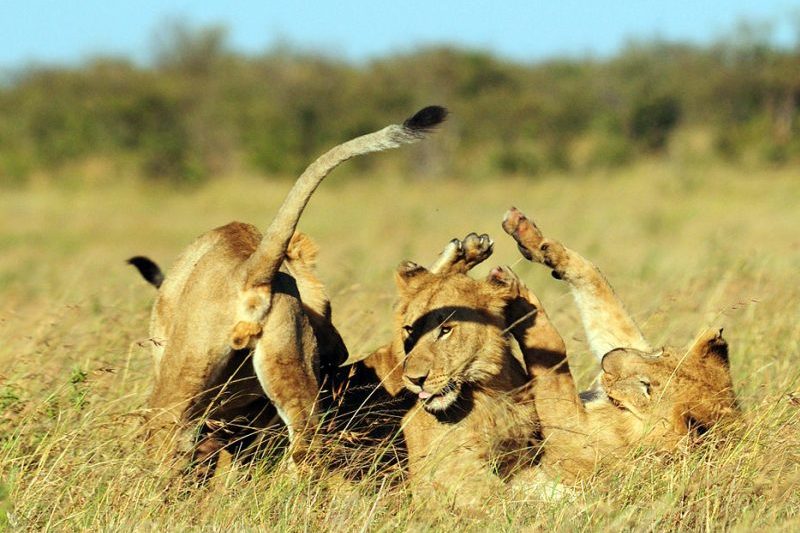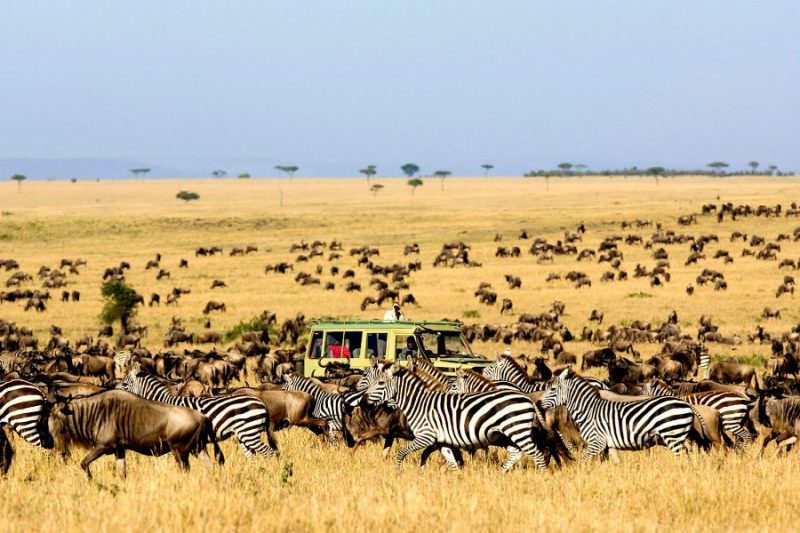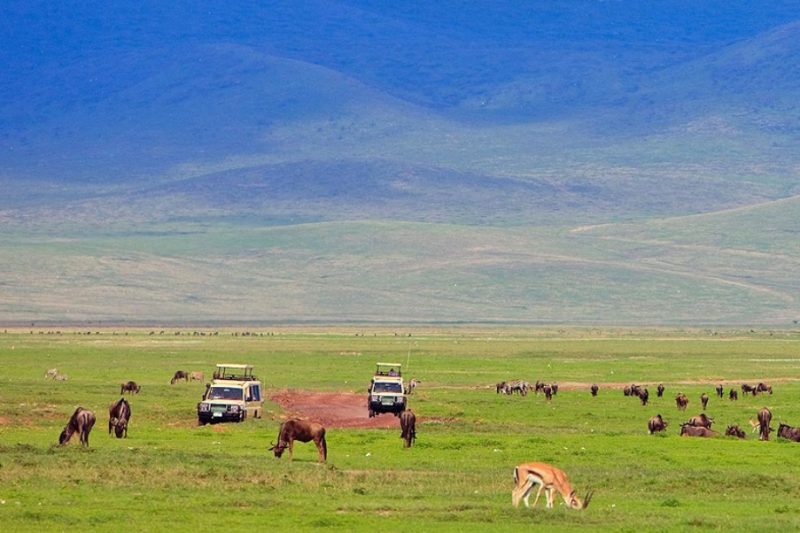Few people forget their first encounters with East Africa’s wildlife meccas, the Serengeti National Park in Tanzania, and the Masai Mara National Reserve in Kenya. Both legendary safari locations in their own right, the Masai Mara and Serengeti share the spotlight as hosts to one of Africa’s most spectacular wildlife spectacles: the annual Great Wildebeest Migration.
With these wonderful places now available to foreign guests, what considerations should be considered when deciding between the two, and which destination guarantees the finest safari experience? We unearth the highlights of each place and its distinct features to assist you in deciding which is the greatest fit for your vacation needs.
Habitat & Landscape
While the Masai Mara and Serengeti are both important components of the Mara-Serengeti ecosystem, their landscapes are not the same. For starters, their sizes are vastly different. The Serengeti is massive at 14,760km2/5,700mi2, whereas the Masai Mara is little at 1,510km2/585mi2. Although open grassland dominates the Serengeti, it also preserves a diverse range of other habitats, including kopjes (rocky outcrops), evergreen riverine forest, and deciduous woodland. The vistas of the Serengeti alter as you journey from south to north. As you approach the Northern Serengeti and, eventually, the Masai Mara, the landscape gets increasingly mountainous and forested.
The Serengeti is commonly separated into three sections: the Serengeti plains, the western corridor, and the northern Serengeti. The Serengeti plains are the park’s most iconic landscape, consisting of practically treeless grassland in the south, while the black clay soil that covers the savannah in this region is known as the western corridor.
Best Time to visit
In general, the best time to visit any park is between the dry months of June through October. When animals are lured to available water sources, such as rivers and waterholes, this occurs. The vegetation shrivels away as the Dry season approaches, making wildlife watching easier – especially for predators, which may be difficult to notice while the grass is tall. The optimum time to witness the wildebeest migration, however, varies between the Serengeti and the Masai Mara. The exact schedule is dependent on rainfall, but from January to September, you have a decent chance of watching the migration in the Serengeti. The migration in the Masai Mara is best seen between September and October.
Wildlife
Both the Masai Mara and the Serengeti provide excellent opportunities for animal watching. They are most known for the annual wildebeest migration that takes place between Tanzania and Kenya. However, there is a diverse range of permanent animals. Both parks are Big Five locations with consistent sightings of lion, leopard, buffalo, and elephant — as well as cheetah, giraffe, and other wildlife. Rhinos are uncommon across the environment, but the Masai Mara is significantly more likely to witness them. Particularly in the western area known as the Mara Triangle, where you have a good chance of running across one of these heavyweights.
Because of Mara’s smaller area and increased concentration of hotels and lodges, it is more difficult to get away from the throng.
Duration of the visit to these places
Masai Mara is the preferable option if you want to get in as much safari adventure as possible throughout your vacation. Because it is significantly smaller than the Serengeti, you may cover much more ground in two or three days. Because of the concentration of species, you may observe more wildlife in a shorter period due to its smaller size.
The Serengeti, on the other hand, is ideal for those searching for a long journey. Even a 4-5 day vacation will most likely not let you see everything the Serengeti has to offer.
Accommodation
Both the Masai Mara and the Serengeti provide tented camps, affordable tents, and huge resort-style hotels. The cost of travel varies based on the season and the degree of service desired.
Many of the best lodges strive to fit in with their surroundings and are surprisingly down-to-earth. They may not have many modern conveniences. Instead, they strive to be environmentally responsible while providing a unique experience with excellent service, cuisine, and coaching.
Mobile camps are even more basic, yet more exclusive.
During migration season, the central and eastern areas of Masai Mara are generally popular, so if you want to stay beside the Mara River, you must book ahead of time to get a close-by hotel. Otherwise, consider an exclusive camp in one of the northern private concessions for a more personal experience.
The Wildebeest Migration
Close to two million wildebeest, zebra, and other antelopes collect their young and migrate from the Serengeti National Park in Tanzania’s north to Kenya’s Masai Mara National Reserve in search of greener pastures. Their voyage is 1,800 miles long and circles in a clockwise direction. The Mara and Serengeti are the only two areas on the planet where the Great Migration, a spectacular occurrence, takes place, which is one of the reasons they are so famous today.
Cost
A safari in the Masai Mara is often less expensive than one in the Serengeti. For starters, there are more affordable lodging alternatives in the Mara than in the Serengeti, with many of them located outside of the reserve. Because of the Serengeti’s immensity and the fact that the major access point is through the Ngorongoro Conservation Area, living outside the Serengeti and entering the park for day trips is not an option. The Masai Mara’s reasonably cost lodging options are largely concentrated on the reserve’s eastern edge, which may make the experience extremely crowded, especially during the high season. Staying in the Masai Mara’s calmer western side and center plains will normally cost a little extra.
Safari experience and Activities
Similar wildlife safari activities are available in Masai Mara and Serengeti Park. In both cases, wildlife viewing takes the shape of morning and afternoon safari vehicle game drives. Both provide restricted night drives and walking safaris in private game reserves, wildlife conservancies, or concession areas, rather than in national parks.
In the Masai Mara National Reserve, you may go on a hot-air balloon safari. Hot-air balloon safaris are available in several of the private reserves and concession sections of the Serengeti, but not in the national park.
Recommended Tours

3 DAYS, 2 NIGHTS MAASAI MARA SAFARI FROM NAIROBI
Known as one of the finest wildlife destinations in the World. Excellent chance of seeing the Africa Big Five, Big cats, wildbeest & lots of wildlife
From $650 /per person
4 DAYS, 3 NIGHTS TANZANIA BUDGET CAMPING SAFARI TO SERENGETI AND NGORONGORO
Lake Manyara is renowned for its tree-climbing lions. Ngorongoro Crater is often called ‘Africa’s Eden’. Serengeti is home to the big five
From $800 /per person
8 Days Safari Kenya & Tanzania | Private Lodging
Explore Masai Mara, Serengeti National Parks famous for the big five, wildebeest migration. And other tour destinations
From $2,100 /per person
